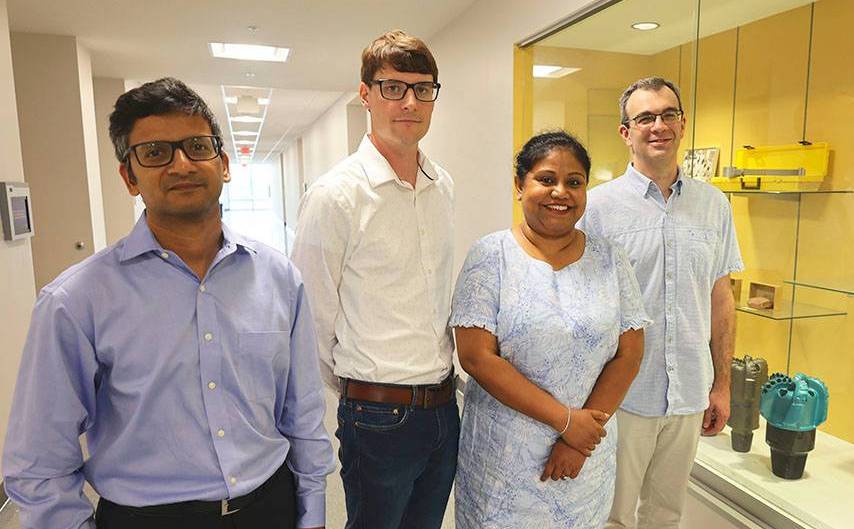LSU Petroleum Engineering Professor, Research Team Seek to Plug Orphan Wells Leaking Methane
 September 19, 2023
September 19, 2023
BATON ROUGE, LA – There are currently more than 4,500 orphan oil wells in Louisiana, meaning oil companies have abandoned them for one reason or another, namely for not making money. Nearly 450 of these wells were tagged “orphan” in 1994, which means they have been dormant and possibly leaking methane gas for nearly 30 years.
Thanks to a $3 million grant from the Louisiana Department of Natural Resources, LSU Craft & Hawkins Department of Petroleum Engineering Professor Ipsita Gupta is working with a team of LSU researchers to find out which wells are leaking and measure their emissions before and after they are plugged.
“What we’re doing with this project is helping the Department of Natural Resources, who received funding from the U.S. Department of the Interior, to find out which wells are leaking and need to be prioritized for plugging,” Gupta said. “The U.S. Department of the Interior wants states to plug orphan and idle wells because they emit methane, a potent greenhouse gas that causes temperature increase and global warming.”
While other states can use drones and planes to measure methane and other gas emissions, it is trickier in Louisiana, since the wetlands also emit methane. One of the ways to accurately measure methane emissions in the state is to measure individual wells, which is being done by LSU Department of Oceanography & Coastal Sciences Chair and Professor Kanchan Maiti. Though Maiti normally measures methane and other gases at the bottom of the ocean, he says the principles of measuring methane from an in-ground well are the same, with one major difference.
“When we’re in the ocean, we target a general area to collect samples, and we generally don’t need permission,” Maiti said. “Wells in Louisiana can be on private land, and it’s not easy to access them.”
Maiti and his field team, with help from DNR inspectors, have braved the oppressive heat this summer, sometimes walking as far as a mile while carrying loads of equipment to find an orphan well. Some wells are sticking up six feet, while others are hiding in shrubs or nearly buried in the ground. How many wells are checked each day depends on the location and conditions.
To measure the methane concentration coming out of a well, Maiti’s team positions flux chambers over the wellheads and watches the reader to see if methane is being emitted and at what rate. They usually measure emission for 10-50 minutes, but some wells can only be measured for a very short period of time due to the risk of methane levels inside the chamber going over the lower explosive limit of 5%.
“Those wells are definitely big leakers,” Maiti said. “We’ve already measured quite a few where we had to stop quickly.”
Gupta said of the 800 wells that have already been measured, more than 180 had leaks.
“That is a significant percentage,” she said.
“We want to know how methane impacts our global temperature rise,” Maiti said. “That translates to lost hours of productivity because it’s too hot for people to work outside or they need more breaks. This is a social cost.”
LSU Center for Energy Studies Interim Executive Director and Associate Professor of Research Greg Upton, who is a principal investigator alongside Maiti on this project, is studying the financial impact of plugging these leaking orphan wells.
“What the Department of the Interior wants the states to do is quantify how much methane is coming from these wells in order to say how much methane was reduced with these federal funds,” Upton said. “We’re working with the Department of Natural Resources in order to not only estimate the cost of plugging all of these wells as the cost data comes in, but also how much methane is coming out of those wells.”
Working alongside Gupta, Maiti, and Upton are LSU Department of Environmental Sciences Associate Professor Brian Snyder and University of California-Davis Assistant Professor Mark Agerton.
“Methane is a greenhouse gas that we can have the biggest impact on,” Snyder said. “It has a short lifetime in the atmosphere, so if we don’t emit it, it will fall out of the atmosphere in 25-50 years.”
According to the United Nations Environment Programme’s Climate and Clean Air Coalition of 2021, reducing methane emissions by 45% means the prevention of 255,000 deaths from respiratory and cardiovascular diseases each year; 775,000 asthma-related hospital visits; 73 billion lost work hours to heat exposure; and 26 million tons of staple crop losses.
“This project will be impactful for the people of Louisiana,” Gupta said. “It will not only have an immediate impact on reducing methane emissions from orphan wells, which is an important health, safety, and environmental concern; plugging orphan wells will also be impactful for ongoing and future efforts on carbon dioxide storage as the CO2 will be safely sequestered underground if there are no leaking wells around. It is a win-win for Louisiana’s environment and energy economy.”
Like us on Facebook (@lsuengineering) or follow us on Twitter and Instagram (@lsuengineering).
###
Contact: Libby Haydel
Communications Manager
225-578-4840
ehaydel1@lsu.edu